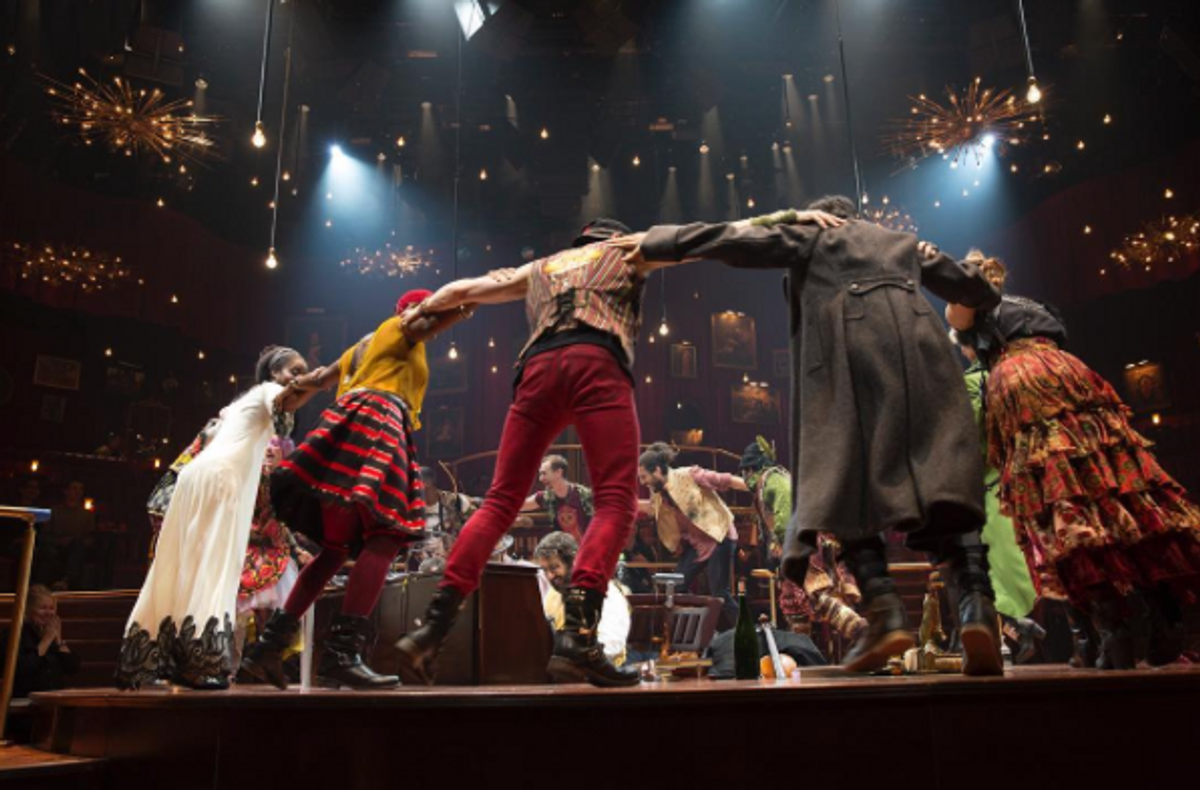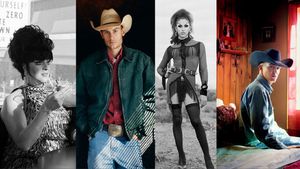From the moment the audience steps foot inside the Imperial Theater, they are physically standing on the set for Natasha, Pierre, and the Great Comet of 1812. Every inch of the theater is designed and altered. This wholly immersive, eclectic show--based on Volume 2, Part 5 (roughly 70 pages) of Leo Tolstoy's War and Peace--blends Broadway pop, EDM, Russian folk, Russian opera and throat singing together to create a mostly sung-through musical unlike anything you've ever experienced on Broadway before.
Despite its involved set up, the captivating production is still highly accessible. "At first, audiences didn't know what to expect from it," says ensemble member and Anatole understudy Josh Canfield. Many of those early Broadway audiences probably ventured into the show because of Josh Groban's name on the marquee. "Now, people know that it is an actual experience," Canfield says. "And, that is the word that I like to use for this show. I don't like to use immersive."
If you caught an earlier incarnation of the musical, there's plenty of reason for you to book a return trip to Moscow by seeing The Great Comet on Broadway. "There's been a lot of changes," Canfield says. Fans of the Off-Broadway version will notice that a new song has been added ("Dust and Ashes"), and a song has been cut ("Natasha Lost"). The show has also physically grown. "We've added more ensemble," Canfield says. "Now, we have 19 ensemble members on stage, so it's pretty insane." Likewise, the show on Broadway has also added eight swings to the company.
Through these ensemble and swing roles, The Great Comet is challenging Broadway's traditional relationship with gender. "Our swings go on for boys and girls," Canfield says. "The guys do not just cover the guy's tracks, and the girls do not just cover girl tracks; they cover all the tracks. It's completely gender-blind as far as our ensemble goes." This concept may not seem like it could work in musical theater, but it does. "The cool thing about our show is that we're very LGBT+ inclusive. We don't really adhere to gender norms," he says.
The production's nonbinary approach is most pronounced in the ball scene that closes its first act. As Natasha dances with Anatole, the audience can see men and women dancing together, men and men dancing together, and women and women dancing together. "It's not made to be a statement, it's just, this is life," Canfield says. "It's not something that slaps people in the face. But when they look around they think, 'Oh yeah? But, this seems normal.' And, that's the way it should be."
Through a genderless approach, director Rachel Chavkin and choreographer Sam Pinkleton are making effortlessly bold statements. It's sheer brilliance that this attention to detail reads as an inattention to detail. After all, the prologue's lyrics often tell us, "You are at the opera," as a constant reminder that this is simply entertainment. But The Great Comet's staging intrinsically tells us something more. "This is the culture of our theater," Canfield says, "and it is the culture of New York and Broadway, and it should be the culture of the world."
For tickets and more information about Natasha, Pierre, and the Great Comet of 1812, visit greatcometbroadway.com.
























































































